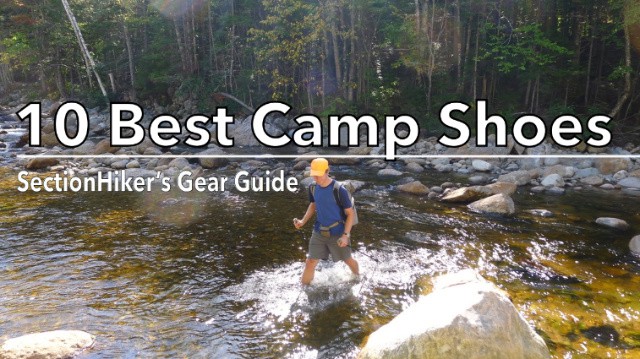
Many hikers and backpackers carry camp shoes to help their feet recover after a hot day of hiking or to change into for stream crossings to keep their socks and hiking footwear dry. Sandals, water shoes, slides, clogs, and minimalist footwear are all popular choices but it’s worth giving some thought to their strength and weaknesses in different environments and climate conditions. They’re also indispensable for showering in hostels and at campgrounds to avoid contracting athlete’s foot from others. Check out our Camp Shoe Selection Guide below for a full discussion of the factors you should consider.
Here are the 10 Best Camp Shoes that we recommend.
| Make / Model | Gender | Avg Weight (Pair) |
|---|---|---|
| Merrell Hydro Mocs | Mens | Womens | 11 oz |
| Birkenstock Arizona EVA Sandals | Mens | Womens | 8 oz |
| Crocs Classic Clogs | Unisex | 12 oz |
| Xero Shoes Aqua X Sport | Mens | Womens | 12.4 oz |
| Hoka One One Ora Recovery 3 Slides | Unisex | 12.8 oz |
| OOFOS OOahh Sport Slides Sandals | Unisex | 12 oz |
| Shamma Sandals Cruzers | Unisex | 8 oz |
| Crocs Crocband Flips | Unisex | 8 oz |
| Mayfly Ultralight Imago Camp Shoes | Unisex | 1.8 oz |
| Classic Fitkicks | Mens | Womens | 9 oz |
1. Merrell Hydro Mocs
| Shop at REI | Shop at Amazon |
2. Birkenstock Arizona EVA Foam Sandals
| Shop at REI | Shop at Amazon |
3. Crocs Classic Clogs
4. Xero Shoes Aqua X Sport
| Shop at REI | Shop at Amazon |
5. Hoka One One ORA Recovery 3 Slides
| Shop at REI | Shop at Amazon |
6. OOFOS OOahh Sport Slide Sandals
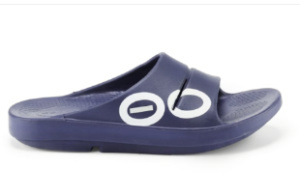
| Shop at REI | Shop at Amazon |
7. Shamma Sandals Cruzers
8. Crocs Crocband Flips
9. Mayfly Ultralight Equipment Imago Camp Shoes
10. Classic Fitkicks
Camp Shoes 101: Selection Guide
There are a wide range of factors that make good camp shoes or water shoes for stream crossings. While almost all stream crossing shoes make acceptable camp shoes, many camp shoes lack the protection or traction needed for more challenging stream crossings, where you can’t see your feet or the bottom. Packability, stream crossing protection, weight, warmth, and insect protection are also important factors to consider when choosing a camp shoe or one that can serve double duty for stream crossings.
If you hike in well-drained hiking boots, shoes, or trail runners, it’s worth asking yourself if you even need camp shoes or stream-crossing shoes or whether you’d rather not carry them and use your existing shoes as camp shoes and stream-crossing shoes instead. There’s no right or wrong answer; it all depends on what your priorities are. There are times when it’s nice to slip on a warm and dry pair of camp shoes while cooking dinner in camp.
Packability
If you plan on backpacking, it’s best to get a camp shoe or water shoe that’s easily packable with an upper that folds flat against the sole. Shoes with folding uppers are easily packed in pockets, and if they’re wet, in the front stretch mesh pocket of many backpacks. While you can hang bulky camp shoes on the outside of a pack, they can get torn off by passing vegetation or simply fall off because you didn’t secure them well.
Protection While Crossing Streams
Shallow streams are usually easy to cross because you can see your feet and the streambed bottom. But you’ll want camp shoes or water shoes that provide more foot protection if you have to cross deeper streams where you can’t see the streambed or sunken obstructions like sticks and logs. Water shoes that provide more protection around the toes and sides of your feet have a firmer sole, and better ankle support are advantageous in such circumstances. We never recommend crossing barefoot.
Athlete’s Foot Prevention
There’s nothing worse than picking up a case of Athlete’s Foot in public showers in hiker hostels, bunkhouses, or public campgrounds. Protect yourself by wearing camp shoes in the shower and allowing your feet to dry thoroughly after hiking all day in hot and sweaty hiking boots or trail runners. It takes forever to get rid of, especially if you’re day-to-day footwear doesn’t have a chance to dry out at night.
Weight
Many backpackers are obsessed with the weight of their backpacking gear and leave comfort items behind because they’re not strictly necessary or carry lighter-weight alternatives. In general, shoes that can only be used in camp tend to be lighter weight than those that are designed to be water shoes.
Warmth
If you’re camping or crossing streams in cold weather, you may want to opt for camp shoes or water shoes that encase your foot and your ankle more like a wetsuit bootie rather than sandals or slides. Don’t underestimate how cold mountain streams can get even in summer, especially if you have to ford wide streams. The same holds for standing around camp in colder weather. Camp shoes/water shoes with fewer ventilation ports will be warmer.
Insect Protection
If you’ve ever gotten a mosquito bite on your foot, you know how itchy and unpleasant they can be. Unfortunately, insects become more prevalent in the evening, just as you’re cooking dinner in camp. Water shoes with neoprene or lycra uppers are generally more insect-proof than sandals, slides, and clogs. Wearing a sock with a relatively open shoe may still not provide enough insect protection for your needs, something to consider.
Check Out All of SectionHiker's Gear Guides!
- 10 Best Hiking Shoes and Trail Runners
- 10 Best 2-Person Backpacking Tents
- 10 Best 1-Person Backpacking Tents
- 10 Best Backpacking Stoves
- 10 Best Backpacking Water Filters
- 10 Best Lightweight Backpacks
- 10 Best Ultralight Backpacks
- 10 Best Backpacking Sleeping Bags
- 10 Best Ultralight Backpacking Quilts
- 10 Best Lightweight Backpacking Chairs
- 10 Best Backpacking Sleeping Pads
- 10 Best Backpacking Rain Jackets
- 10 Best Hiking Daypacks
- 10 Best Hiking Pants
- 10 Best Trekking Poles
 SectionHiker.com Backpacking Gear Reviews and FAQs
SectionHiker.com Backpacking Gear Reviews and FAQs 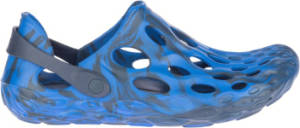
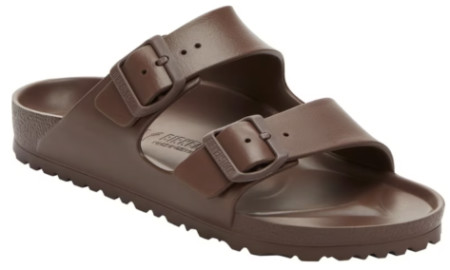
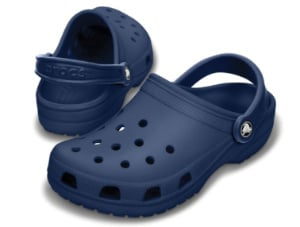
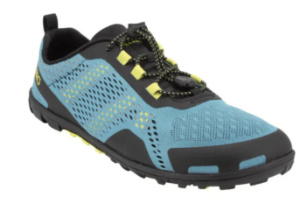
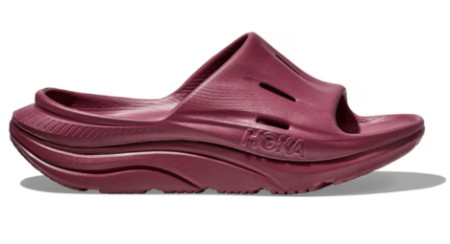

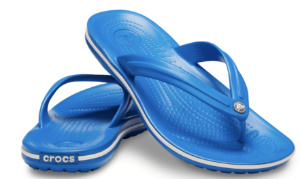
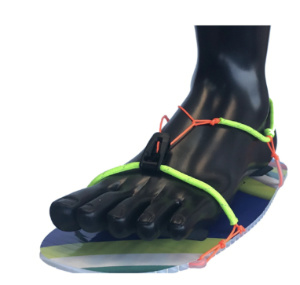

I’ve been using the Birkenstock foam Arizona Eva sandals on my last couple backpacking trips. They are comfortable and lightweight, only 4 oz per sandal.
A Crocs man for a very long time. They fit my EEE feet perfectly once they stretch a little. Put the heel strap down and they’re great for wading streams. Otherwise I keep the straps up. The soles are grippy enough for wet work. The toe cage does a great job of protecting your feet. Scree can and does enter the ventilation holes but for most other purposes Crocs can be used for main hiking shoes. I order the white color so that I can find them in the middle of the night and also see my feet on wet rocks so I don’t trip or fall. An excellent choice for footwear with some of us.
For proper camp shoes, I do like the Arizona sandals but I find myself bringing the Rab VBL socks (discovered from your review) for overnight trips. Work much better than slow cooker or bread bags and when used with my trail runners, they protect my feet more sandals.
I like the Mayfly Imago sandals. One problem. The cordage that passes through the linelocs tends to slip.I think the problem could be fixed if larger diameter cordage is used.
I know they’re perfect for some folks. I figured it was worth it to give them a try because they’re so cheap. A stick poked a hole in them, and I swear I found every rock in the area around my campsite. I kept mine because they take up so little space in my gear storage, but I went back to carrying my Crocs.
Zhuanglin Men’s Quick Drying Aqua Water Shoes. I have been using these for several years for water crossing and camp shoes $22.
I discovered the Xero Z-Trail EV – Trail Hiking, Running, Recovery Sandalslast year and love them for camp wear. They are extremely comfortable and very sturdy and well-made. So comforatable, in fact, I wear them everywhere.
I have 2 pairs of the Birkenstock Arizona sanders. I love then but they are not durable. Both pairs have cracked by the front strap (sole). Time to get the Shoe Goo out!
Don’t dismiss the Croc knock-offs readily available online or in stores for MUCH cheaper….and lighter weight! I ordered one pair of “garden clogs” online, and got another pair at a hobby store for a single digit price, and each weighs sub 7 oz per pair! Win-win in my book.